Online Traceability Matrix
The Online Traceability Matrix extension revolutionizes the way you manage and link project elements
Azure DevOps (ADO) is a versatile tool for managing projects, but its true power shines when customized to fit the unique needs of your project. By creating new work item types, you can ensure that every element of your project is tracked and managed in a way that reflects its specific requirements and workflows
With this approach, you are able to tailor your project management. Different elements in a project require different states, approval points, and fields. For instance, a business process will have distinct stages and approvals compared to a design document or a configuration task in Dynamics 365 for Finance and Operations (D365FO)
This is where the Online traceability matrix really is powerfull. Traditional methods limit you to querying in several steps – from Process L4 to Requirements, from Requirements to FDD, and from FDD to Test Case. With our extension, you can achieve this in a single, streamlined step
This capability not only saves time but also reduces complexity and enhances accuracy. By enabling nested links, you gain a holistic view of your project's documentation, ensuring every requirement is meticulously traced and connected
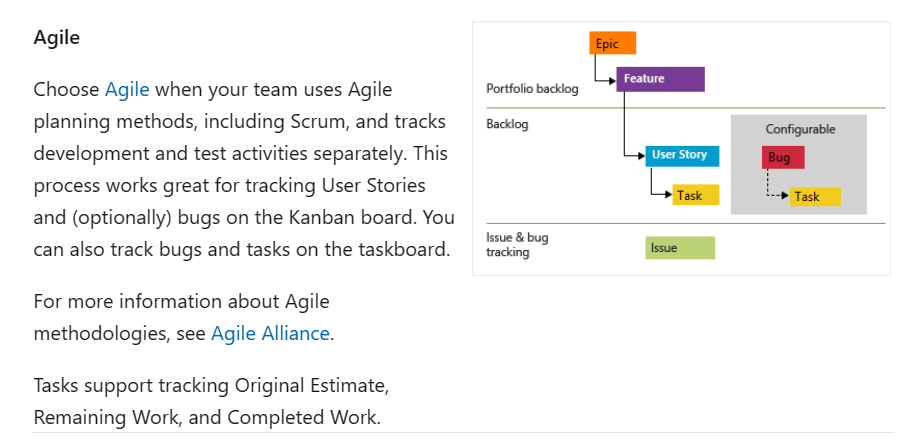
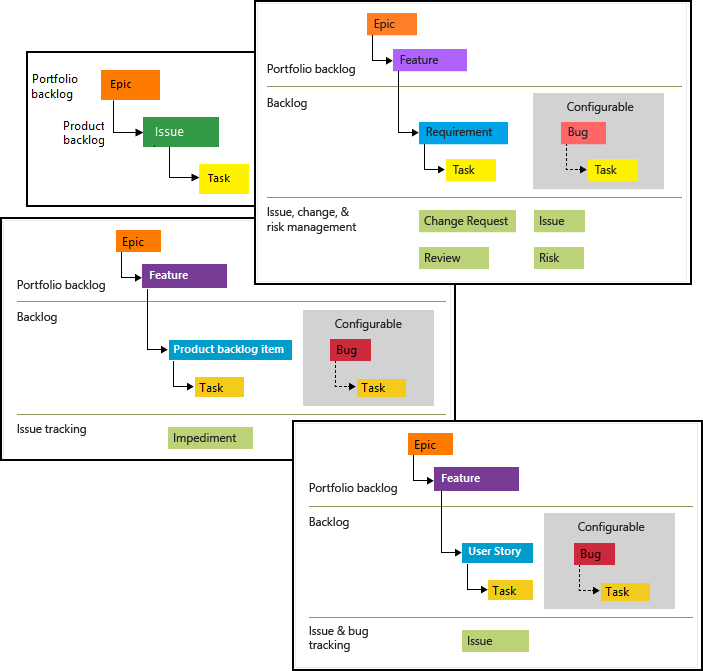
Why Extend Azure DevOps with Custom Work Item Types?
Azure DevOps (ADO) is a versatile tool for managing projects, but its true power shines when customized to fit the unique needs of your project. By creating new work item types, you can ensure that every element of your project is tracked and managed in a way that reflects its specific requirements and workflows
With this approach, you are able to tailor your project management. Different elements in a project require different states, approval points, and fields. For instance, a business process will have distinct stages and approvals compared to a design document or a configuration task in Dynamics 365 for Finance and Operations (D365FO)
Custom work item types allow you to capture the nuances of each project component, link these together, providing better control over your project’s progress and more detailed insights into each area
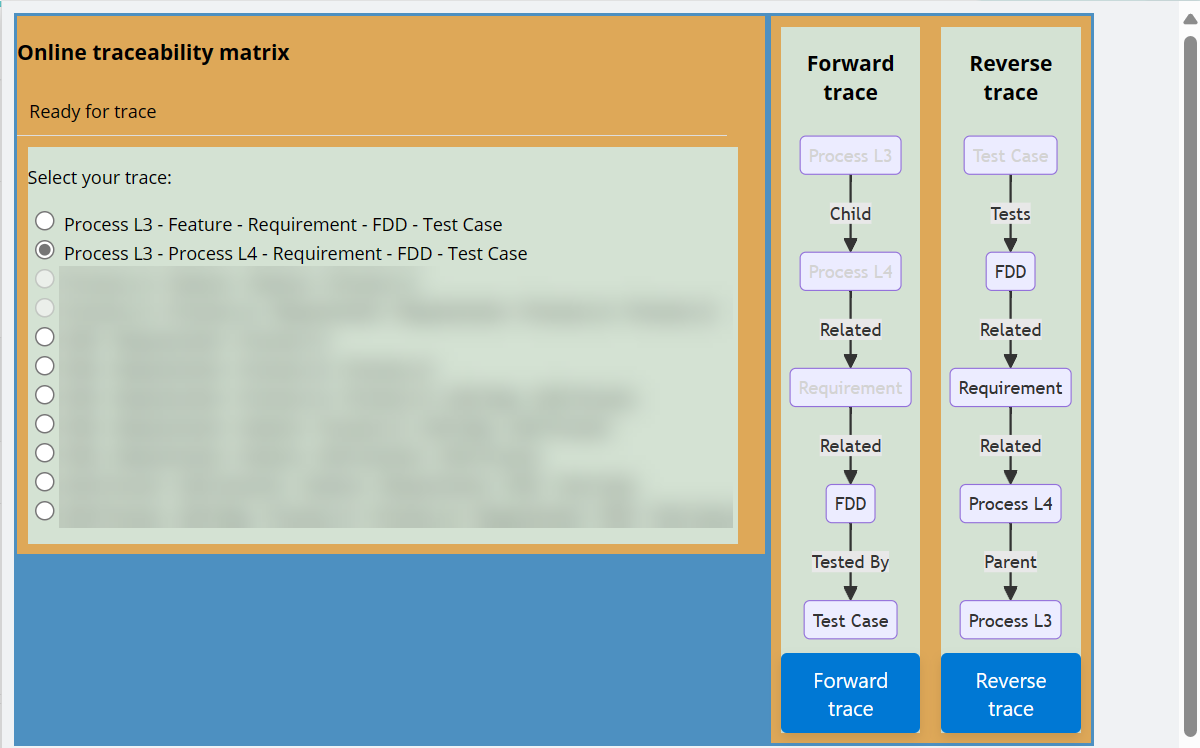
Select your trace
When you open the tool from ADO, imagine you are on an FDD work item. The extension presents you with all your configured trace options
Only traces involving the active work item type are selectable. Upon selecting one, the system displays both forward and reverse trace flows to the right
You can easily perform the trace by clicking either the "Forward trace" or "Reverse trace" button under the respective flow visualization
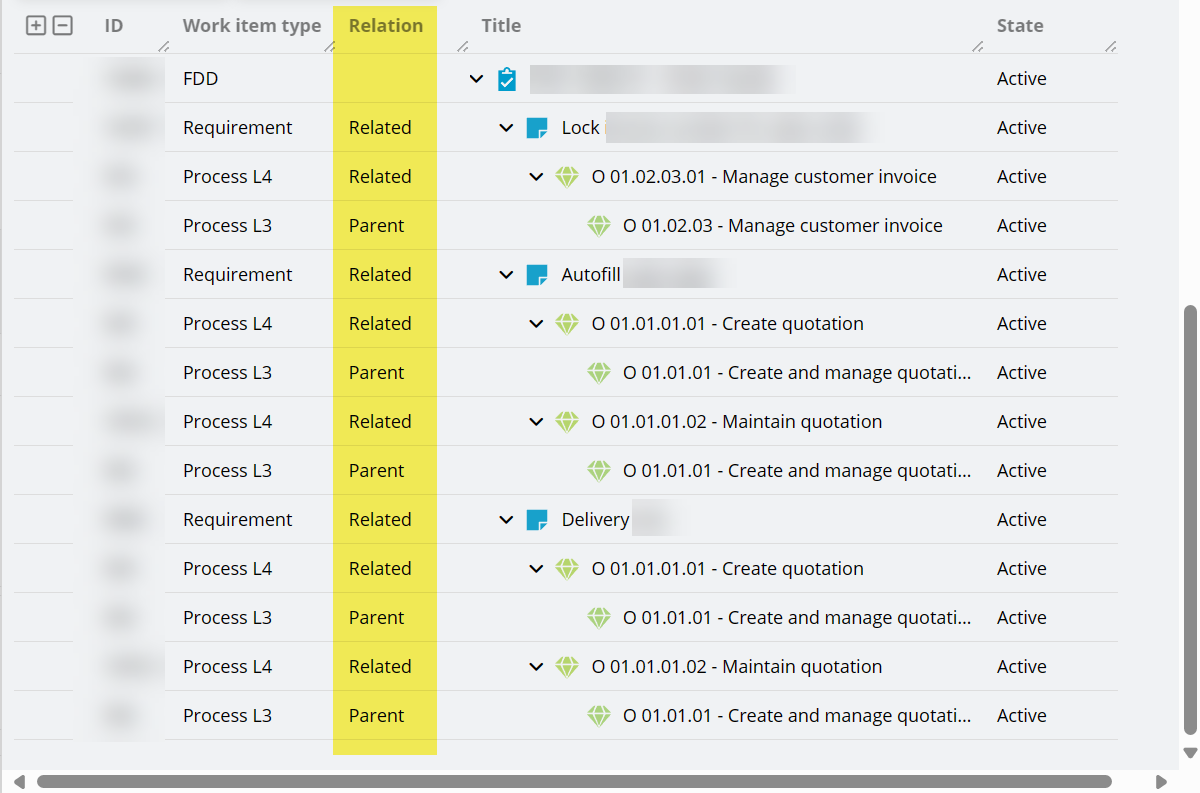
Result with nested links
Once you select the desired trace option and initiate the trace, the Enhanced Traceability Matrix extension presents the results in a visual format looking like ADO
This view showcases nested links and various relation types, providing a clear and detailed map of your project's traceability
The trace can be initiated from a single work item or saved query
Export to Excel is optional
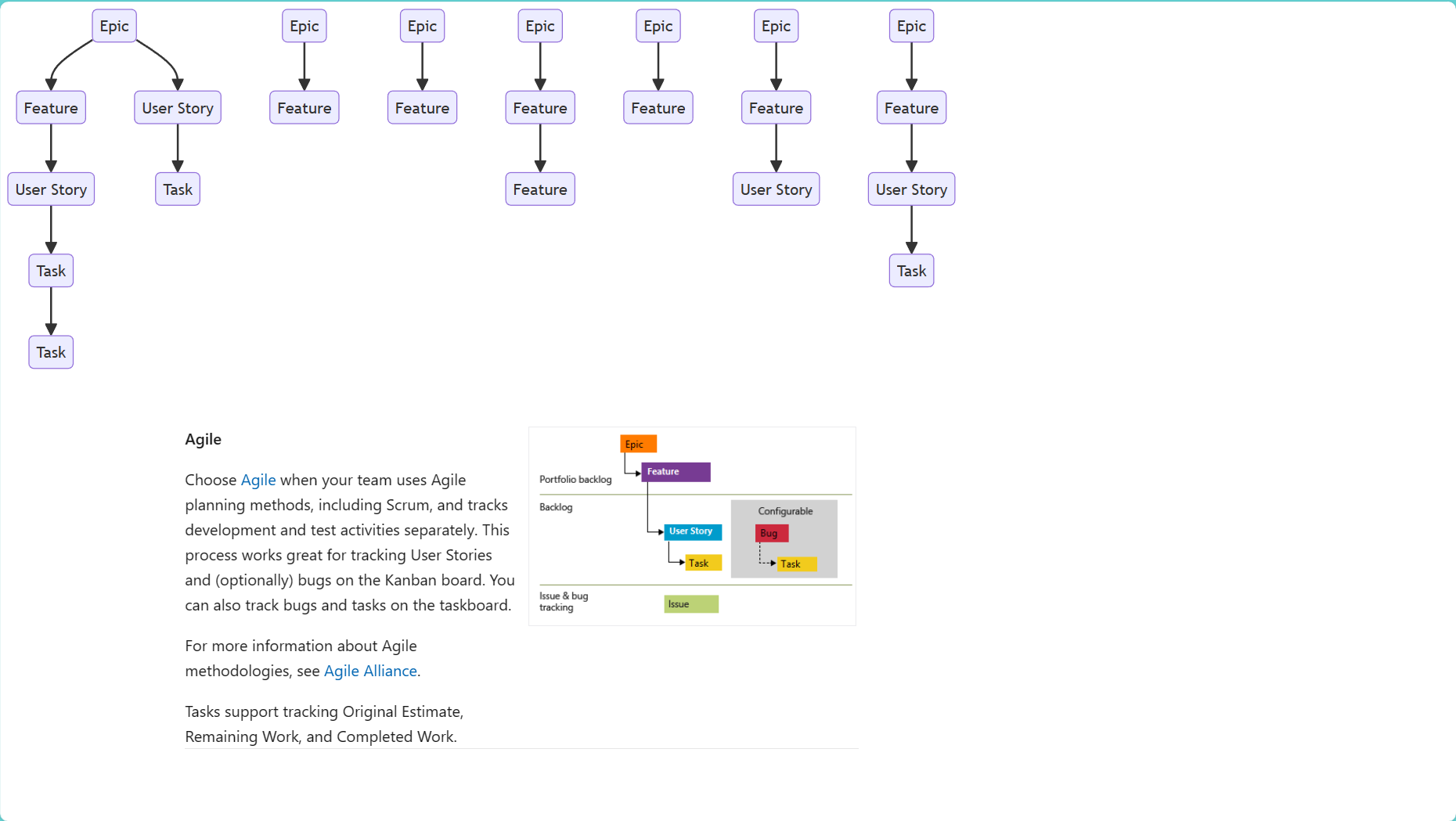
Ensuring Proper Parent-Child Relationships in Azure DevOps
When managing projects in Azure DevOps (ADO), maintaining proper parent-child relationships among work item types is crucial for clear organization and efficient tracking. These relationships help define the hierarchy and flow of work, from high-level epics down to individual tasks. However, ensuring these relationships are followed correctly can be challenging, especially in complex projects
Projects often involve multiple layers of work items, making it difficult to maintain a clear structure. Users may accidentally assign incorrect parent-child relationships, such as features having features as children instead of user stories or tasks. It can be hard to visualize and track the entire hierarchy, making it difficult to identify and correct mistakes
To address these challenges, I have developed functionality that automatically analyzes all relations within an Azure DevOps project. This tool provides a visual representation of epic structures, making it easy for administrators to identify and correct mistakes in the parent-child relationships
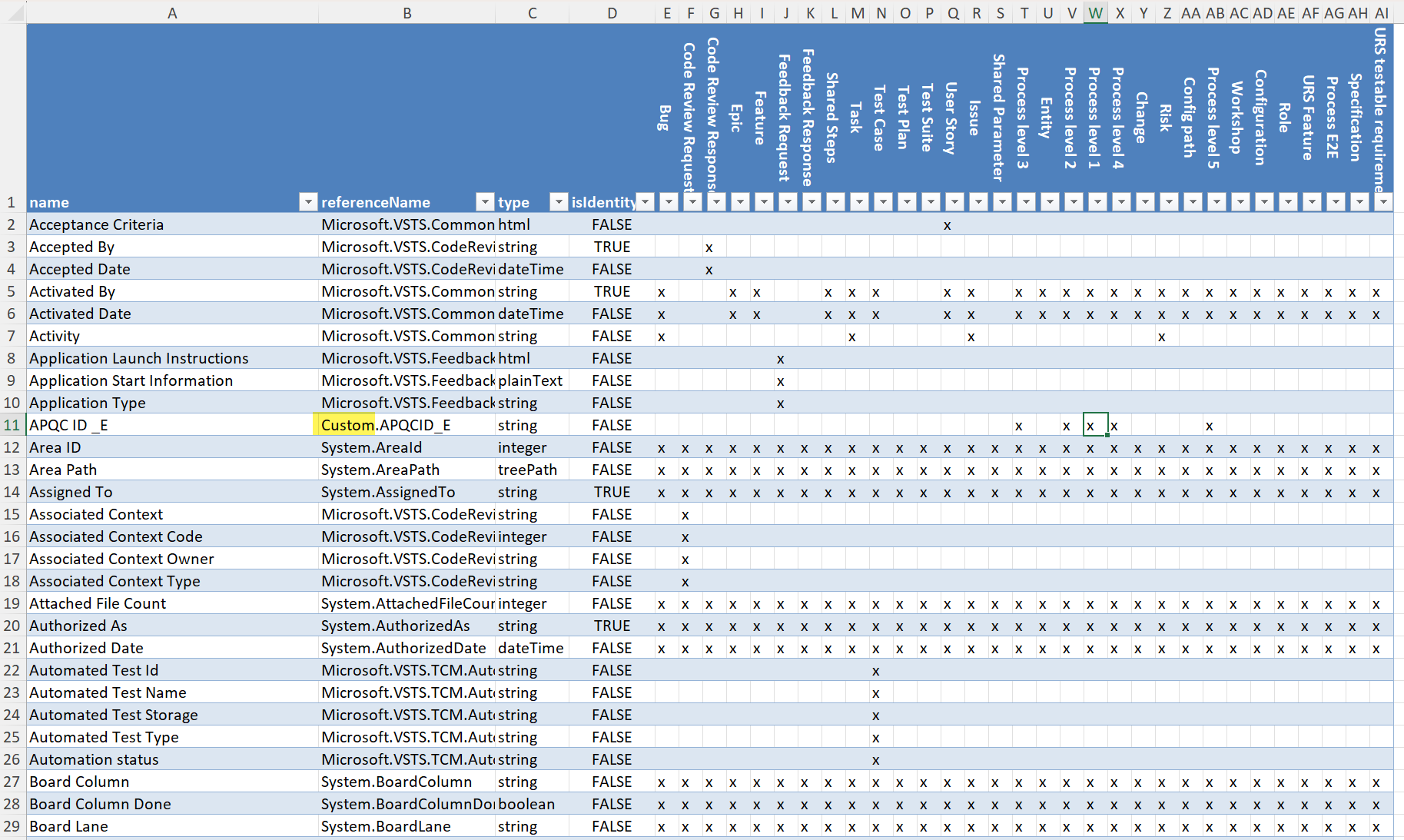
Documenting Work Item Types and Fields in Azure DevOps
In a dynamic and complex project environment, having comprehensive documentation of all work item types and their associated fields is crucial. This documentation provides a clear overview of both standard and custom elements, facilitating better management, auditing, and enhancement of your Azure DevOps (ADO) setup
To address this need, I've developed a functionality that extracts all fields and work item types into an Excel matrix. This matrix offers a detailed view of the fields implemented across different work item types, making it easier to manage and optimize your ADO environment
The matrix provides a clear and comprehensive overview of all work item types and their fields, both standard and custom. It facilitates the management and auditing of work item configurations, ensuring consistency and completeness. Furthermore it helps identify missing fields or inconsistencies across different work item types, allowing for targeted improvements